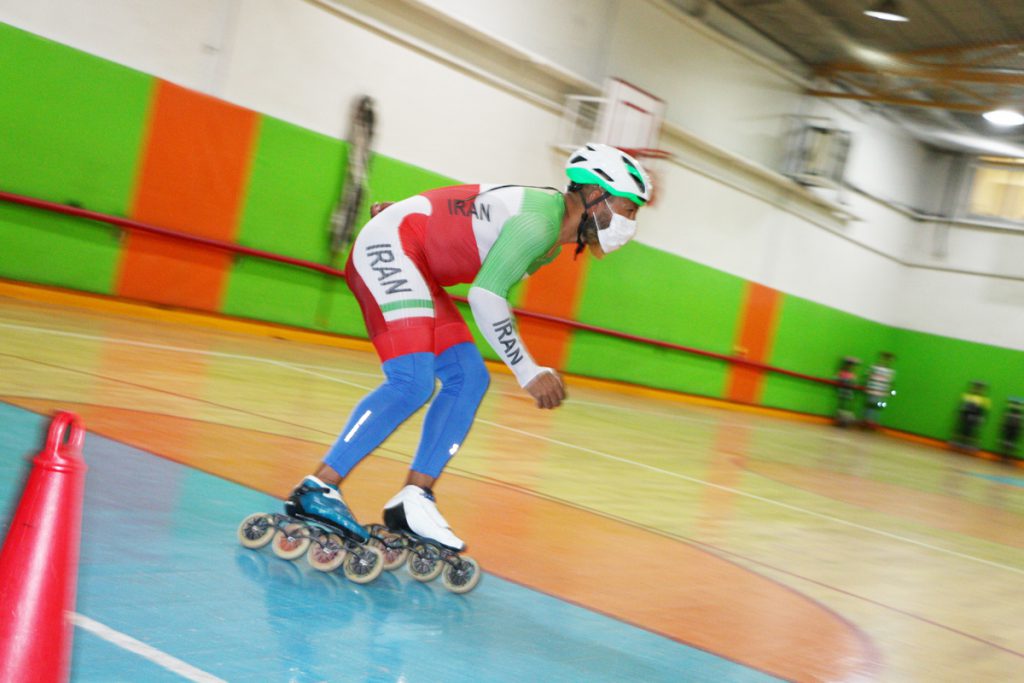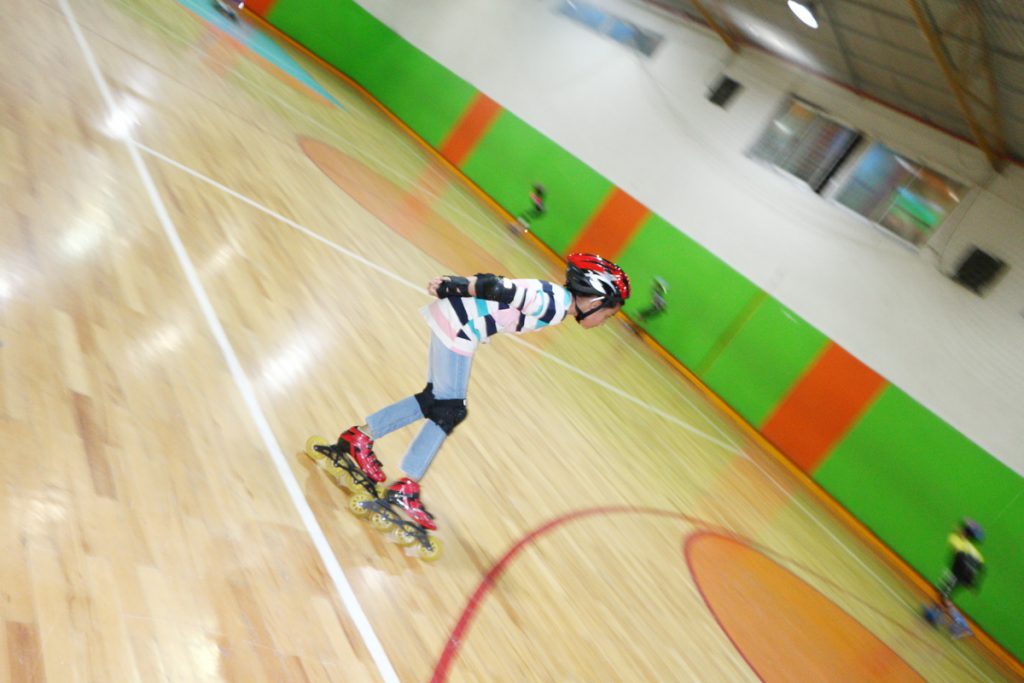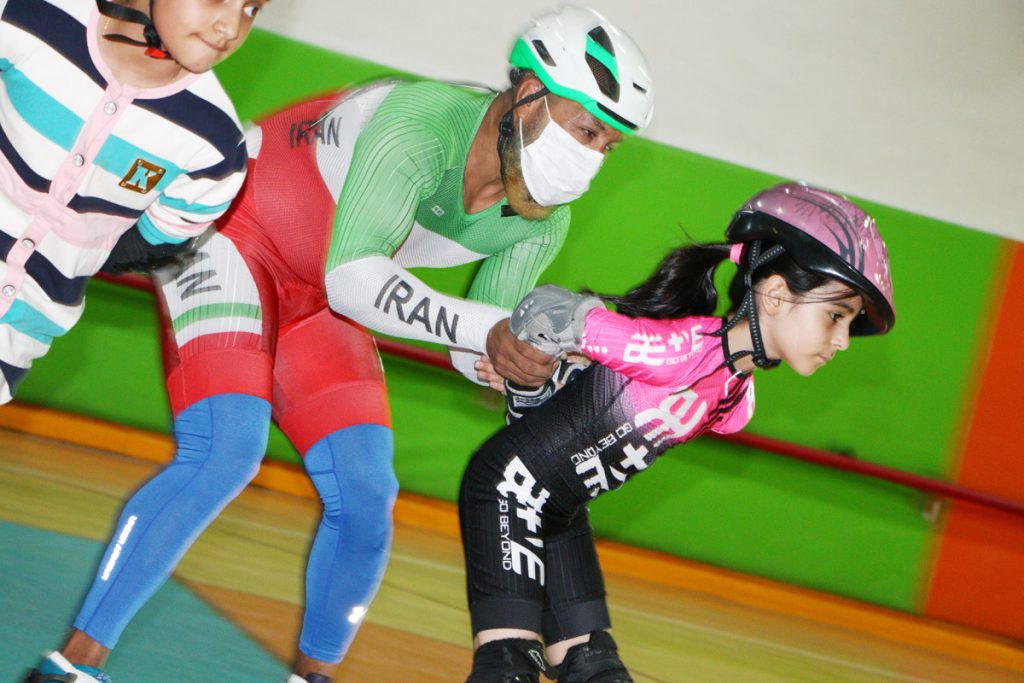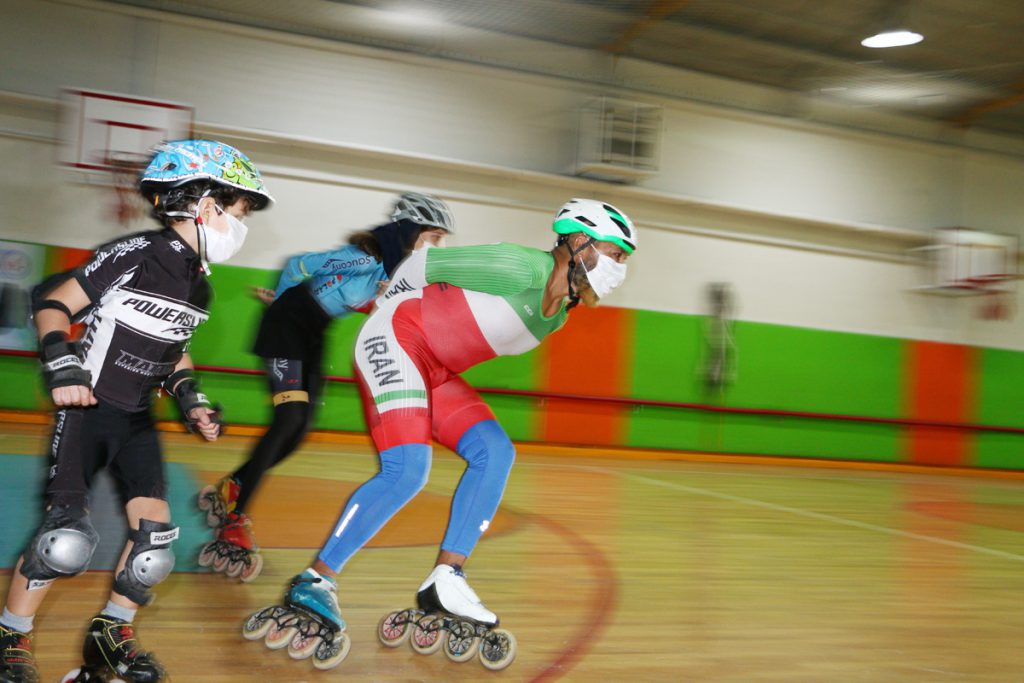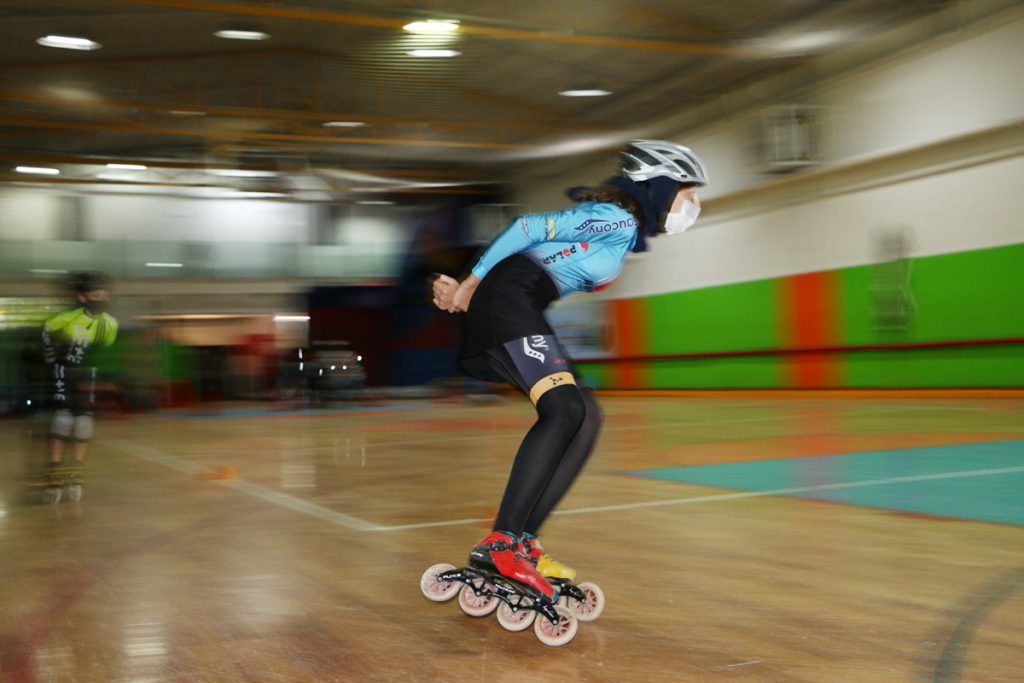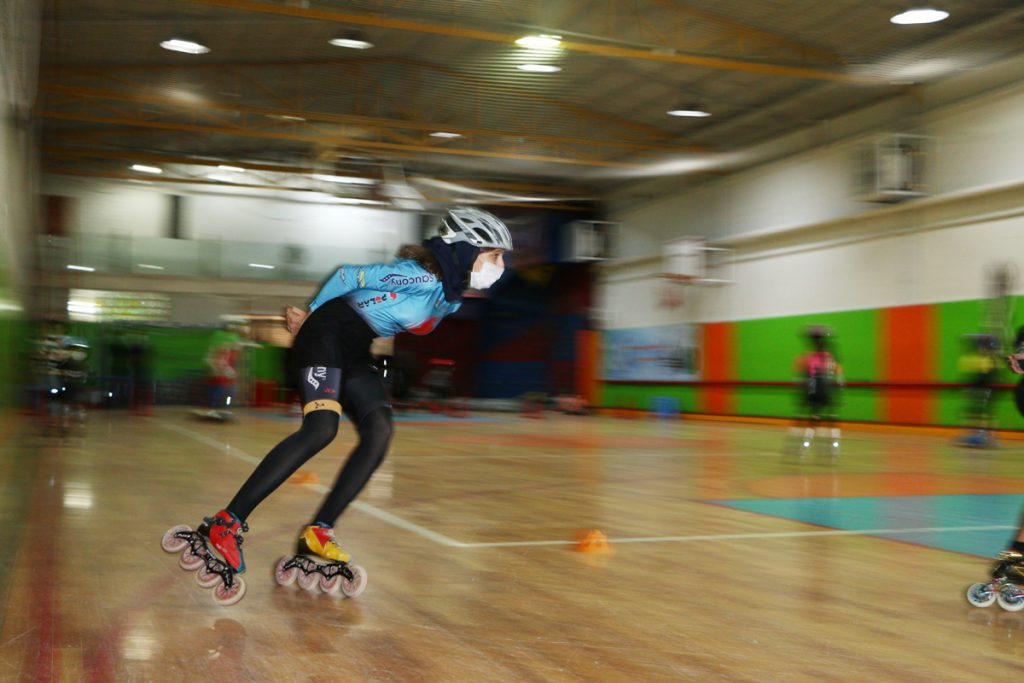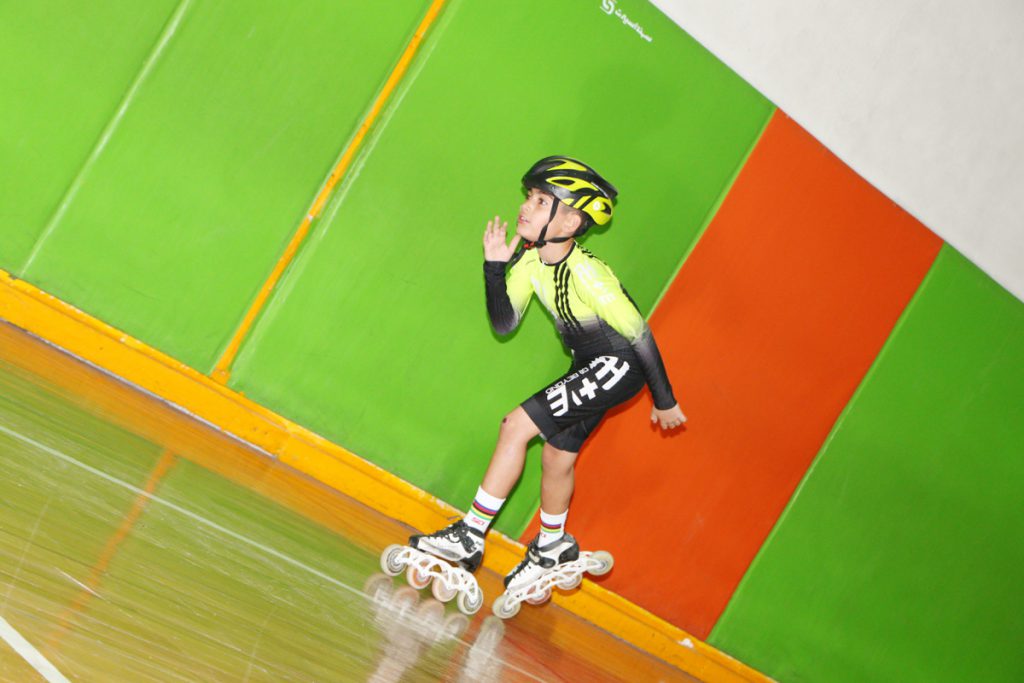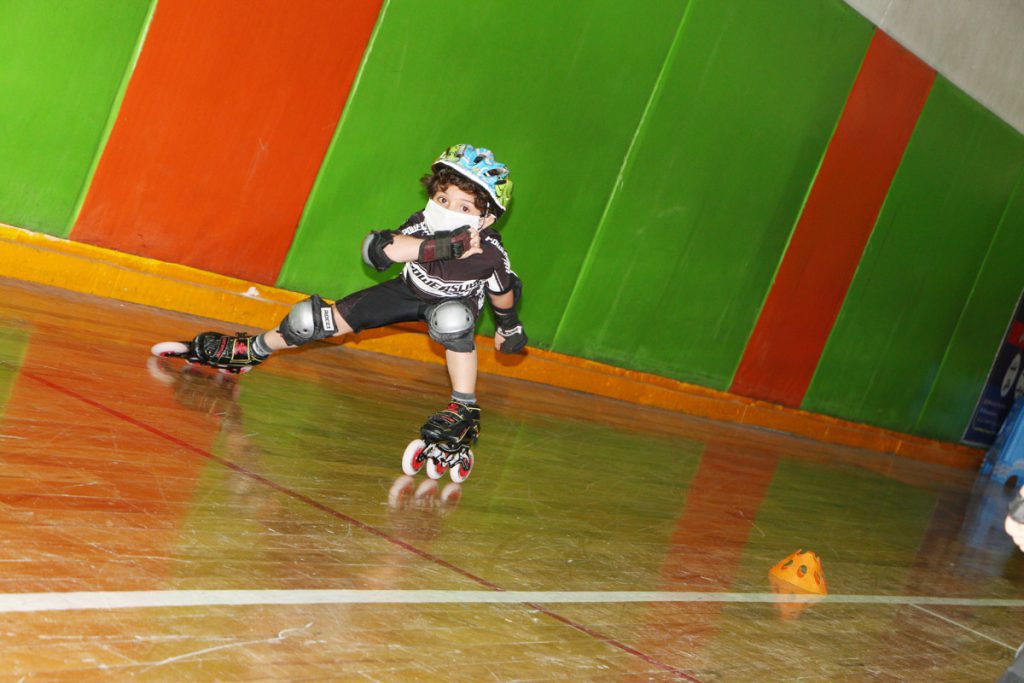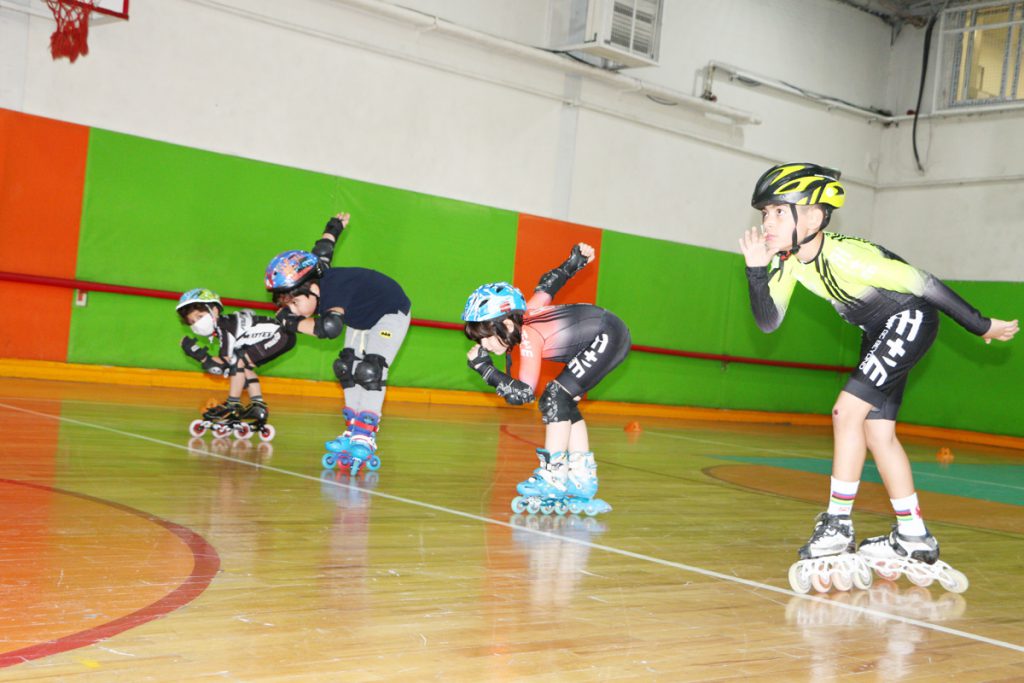Speed skating can be called the mother of all the other forms of skating, in which athletes test their speed and endurance by wearing skate shoes special for this field, and the only criterion for success at that is the time. Speed skating is more the skill of controlling skates and using all the power to reach the highest speed, in which, of course, physical strength and in other words, endurance of the body is also very important. So if you watch speed skating competitions and it seems simple to you, you should know that in speed skating competitions, the details of body, hand and foot movements and the harmony that is created between body parts is very complex and requires constant trainings.
It can be said that people who are new to skating and have become somewhat familiar with the specialized fields of skating, the first field that attracts their attention is the specialized field of speed skating.
Special skate shoes cut off at the ankle, big wheels, special stretch clothes, special glasses and hats, and of course the way the competitions are held in this field, in which athletes compete in racing, are all features that attracts every spectator, even those who have not entered the world of skating yet.
Entering this field, like other specialized fields of skating, requires complete mastery of all basic movements, especially crossover movement, which after consulting with basic trainers and trainer of speed skating field’s recognition, one can enter this exciting field. Of course, some people think that just learning to move on skates as an introduction to speed skating is enough, but mastery is another issue, and the higher the mastery of skating, the higher the growth and development of the applicant will be.
Inline speed skating is similar enough to ice speed skating in terms of type of sport, but they are different in terms of rink design and types of competitions. In terms of design, the speed skating rink is sloping, which has a lot in common with cycling. These two disciplines also have commonalities in terms of having road races.
Primary training in the basic course of speed skating can be done with ordinary skates, which is the recommendation of most professional trainers, that first people enter this field with ordinary shoes, and after learning the basic trainings and passing the basic course, they can prepare special speed skating shoes. In this course, people get acquainted with the basic style of skating in the style of speed skating and the shape of the body on skates, as well as the way of hand and foot movements.
The style and position of the body in speed skating is completely bent in a way that the legs are parallel, we place the palms on the thighs and we bend down from the waist so that the palms reach the knees and place the three points including the shoulders, knees and the front of the skates in a straight line. In this case, you are in the basic position of speed skating. It should be noted that in this case, the waist is completely straight and should not be curved or with a hump.
In general, and according to the talents and skills of people, the basic trainings of speed skating and its basic movements will last between 6 months to 1 year and the more effort and continuous training you have and the more persistently you do the exercises, the shorter this time can be for you. It is always the level of interest and thirst for learning that determines one’s success.
After completing the basic speed skating course, specialized skating is used in this field.
Controlling speed skating due to having large wheels and cut off at the ankle, is a bit difficult and inconvenient for beginners at first, and the purpose of training in this course is to acquire motor and balance skills on special speed skates.
In the higher level, in addition to practicing the previous movements, the focus of the exercises is on increasing the endurance of the player, raising the qualitative level of the techniques and generally preparing the player to participate in the competitions.
To begin with, we start with interclub competitions so that people gradually get acquainted with the conditions of the competitions, and the higher the level of readiness of the person, the more chance he gets to participate in competitions with higher levels. Readiness increase also includes the applicant’s morale and confidence, which means that the higher the level of competitions, the higher the pressures, and one must be prepared for such a situation in order to achieve the best productivity.
It takes about one year from the beginning of the first competitions to the beginning of the professionals so that the person can acquire a good and acceptable mastery of all techniques and his physical strength can reach a higher level. Certainly, this period can be even shorter with high motivation and continuous training.
Competitions
Track competitions
200 meters duel
Players compete in pairs until the top 12 finally reach the higher level, and these 12 players compete with each other in pairs, as well, and the winners will be determined in terms of time. The recorded times are used to determine the first to third winners.
500 meters
This category is held in four stages, in each stage, the top two competitors reach the higher level, and finally 4 people compete in the final to determine the first, second, third and fourth winners. The length of the track in each stage is two and a half rounds.
1000 meters
In this category, which is held in two stages, the players are divided into 5 or 6 groups, and at the end of the first stage, the top members of each group, plus two of the other participants with the best time will reach the second and the final stage. And in the second level, the people who made it to this level, compete with each other in order to determine the winners in the end.
3000 meters relay
It consists of three players for each team, in which each person, after skating one round of the arena, in the specific area where his teammate is standing, charges him and the competition continues with a new player from the same team in the next round. This process continues in the same way with the third person to determine the first person and the first team.
It should be noted that if a player does this before or after the specified period for charging the player, the whole team will be excluded from the competition and will be eliminated. In this case, the team spirit and excitement of the competition will be higher. Participating in team races with teammates makes you more motivated during training, and this variety in speed skating competitions makes it popular.
10000 meters points and elimination
This competition is 50 rounds and, in each round, the first person gets 2 points and the second person gets 1 point and in the last round the first person gets 3 points, the second person gets 2 points and the third person gets 1 point. In this competition, in any round the bell rings, the last players in that round will be eliminated. At the end of the match, the total points of the players are calculated to determine the winners.
15,000 meters elimination
This competition is 75 rounds, and in each round, with the sound of a bell, the last and remaining members in that round will be eliminated. In the end, there will be 5 people left, and the winners will be determined from among these 5 people.
Road Competitions
100 meters
The standard for holding these competitions is with three competitors, but sometimes it is also held with two or four. In this competition, if a player commits 2 faults in the start or while moving, he/she will be excluded from the competition.
One lap
One Lap is a single journey around a race track, and like the 500-meter race, it is held with four participants. The race track varies from 390 meters to 640 meters and this competition will be held in one round regardless of the track length.
10000 meters point
This competition is in a way that the players will get points in each round of the competition, the first player will get 2 points in each round and the second player will get 1 point until the last round of the competition where the first player gets 3 points, the second player gets 2 points and the third player gets 1 point and at the end the total points will be calculated.
20 km elimination
In this category, in each round of the competition, the last player in each round is eliminated from the competition. At the end, the winners will be determined in the order of crossing the finish line.
Marathon
Competitors should show great endurance in competitions in this category. The length of the track is 42 km and at the end, the top players are determined in order of crossing the finish line.
Skate
To achieve high speed and also to use all the strength of the legs, the style of movement in this field, as mentioned earlier, is completely curved, which would not be possible if one does not use the skate shoes cut off at the ankle, that’s why speed skates are like low cut shoes and they continue up to the ankles, they have a carbon structure and are very tough and strong in order to provide the necessary control for skaters at high speeds and at turnings.
The frames of these skates are usually made of aluminum alloy and sometimes carbon, and wheels for this skate type are usually larger for the purpose of higher speeds and the wheel sizes are 84/90/100/110 and 125 mm.
In the lower ages, due to the small size of the boot skate, three-wheel frames are sometimes used.
In the adult category, the four-wheel frame must not exceed 110 mm and the three-wheel frame must not exceed 125 mm.
Actually, 125 mm frames are only allowed in marathons.
Speed Skates
For best performance, the boot must conform closely to the shape of the foot, so most inline speed skating boots are custom-fitted by molding the shape of the player’s foot.
As mentioned earlier, speed skating boots are low-cut and offer little ankle support, allowing the skater extra ankle movement and helping them have full control. The most common complaints of newcomers to this field are skin blisters due to friction, and common solutions include improving techniques firstly, and secondly using fit socks, using sports tapes and plasters, using sports chalks or finally by changing the boot this problem can be solved. Of course, this is normal in different fields of skating and in professional shoes.
The amount of flex in speed skates can be a personal factor in which frame choice to use. Very “stiff” frames may be favored by heavy skaters. But a frame that is too stiff for a particular skater may feel unstable in particular situations, while frames that are not stiff enough and have high flexes will be slower for skaters.
Frame length is directly related to foot size and wheel size, and the shorter the frame, the better the performance in changing the foot, and the longer the frame, the better the performance on longer distance events. In general, longer frames are used in long-distance competitions and shorter frames are used in sprint competitions. Also, the height of the frame depends on the competition conditions; frames with higher height will be used for sprint competitions, frames with shorter height will be used for long-distance competitions. It should be noted that this issue also has exceptions, so that in the 100 meters competitions, due to the straight path and no need to turnings, frames with shorter height are used. The frame position can usually be adjusted with respect to the skate to adjust for a skater’s individual foot characteristics. Frame positioning is very critical as even a minor change from the skater’s actual frame position, in addition to reducing the efficiency of the skater, can lead to severe foot pain. Adjusting the frame position is very important and It may take a skater several days to weeks to test and adjust the frame position of his new skates. In professionally held skating competitions, frame adjustment will have a direct impact. For example, adjusting a frame for a 100 meters speed skating competition will be different from adjusting a frame for a 500 meters speed skating competition.
Speed skate frames are usually 3-wheel, 4-wheel and 5-wheel. 3-wheel frames are often used for people with smaller foot sizes, and for adults the frames are 4-wheel. Also, in the past, 5-wheel frames were common, but today, with the development of science in the field of speed and also the advances in technology in making speed skates, they no longer have the former fans and these skates have gone down in history.
Skating with big wheels requires a great deal of skills and the more experienced the athletes become, and the more skillful they are at performing the techniques, the more they tend to use skates with bigger wheels.
“Hi-Lo” arrangements are also available, which usually have three larger wheels and one smaller wheel under the ball of the foot, allowing a lower and shorter overall frame design.
In 2014 Powerslide (a German inline skate company) introduced a 125mm wheel for use on a three-wheeled frame varying in sizes from 11.8″ to 13.0″. Much controversy surrounded this development since FIRS did not allow 125m wheels at the 2014 and 2015 world championships. On January 18 of 2016 FIRS released a press release that stated: “Dear Friends, Considering the evolution and growth that our sport has attained in the last years, the FIRS and the Speed Technical Committee have decided to allow, starting from February 1, 2016, the use of the w heels up to a maximum size of 125 mm but only for the Marathons (JUNIOR and SENIOR) and the MASTER Category (MEN and LADIES). We will be grateful for the spread of this information and we take this opportunity to send you. Kind regards, Jorge Roldan, FIRS Speed Technical Committee, Chairman & Robert Marotta FIRS Secretary General.”
Harder wheels minimize elastic hysteresis energy absorption; Generally, Hysteresis is the dependence of the state of a system on its history. for a better understanding of the issue the effect can be demonstrated using a rubber band with weights attached to it. If the top of a rubber band is hung on a hook and small weights are attached to the bottom of the band one at a time, it will stretch and get longer. As more weights are loaded onto it, the band will continue to stretch because the force the weights are exerting on the band is increasing. When each weight is taken off, or unloaded, the band will contract as the force is reduced. As the weights are taken off, each weight that produced a specific length as it was loaded onto the band now contracts less, resulting a slightly longer length as it is unloaded. In the elastic hysteresis of rubber, the area in the center of a hysteresis loop is the energy dissipated due to material internal friction. That’s why, speed skaters tend to select the hardest possible wheels. This will also have exceptions for sure that occurs on short routes and sprint competitions. In this case, athletes will tend to use soft wheels, which will help them start better on the starting line.
Bearing sizes have been standardized around the popular 608 series. A smaller and lighter 688 series have had limited acceptance. Bearing manufacturing precision generally run from ABEC-1 to ABEC-11, and some skate bearings are additionally designed to be “loose” to minimize ball rolling friction.
In short, ABEC is the standard of the United States for recognizing higher quality bearings, which in the following articles, we will discuss bearings and their differences in a very comprehensive way.
Bearings with ceramic balls have been available since the late 1990s. They are lighter and longer lasting, however significantly more expensive compared to their counterparts. Meanwhile, black silicon nitride ceramic is superior to white zirconium dioxide ceramic, since it is considerably harder and has a higher quality.
So, buying speed skates is kind of a science. You need to have enough information in this field to be able to make a proper and correct purchase. An experienced couch should comment when buying speed skates with any sizes, with any number of wheels and with any type of boots. The technique and type of competitions you have planned for can provide you with valuable information in this area that an experienced coach will make the most of it.
Speed skaters move each foot across the center line of travel, leading to the double push, a method named by United States skater Chad Hedrick and gradually became a principle for speed skaters all over the world.

